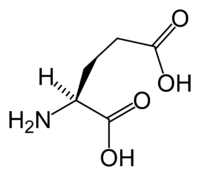
Photo from wikipedia
Autism spectrum disorder (ASD) is a neurodevelopmental disorder characterized by deficits in communication, and social skills, as well as repetitive and/or restrictive interests and behaviors. The severity of ASD varies… Click to show full abstract
Autism spectrum disorder (ASD) is a neurodevelopmental disorder characterized by deficits in communication, and social skills, as well as repetitive and/or restrictive interests and behaviors. The severity of ASD varies from mild to severe, drastically interfering with the quality of life of affected individuals. The current occurrence of ASD in the United States is about 1 in 44 children. The precise pathophysiology of ASD is still unknown, but it is believed that ASD is heterogeneous and can arise due to genetic etiology. Although various genes have been implicated in predisposition to ASD, metabotropic glutamate receptor 5 (mGluR5) is one of the most common downstream targets, which may be involved in autism. mGluR5 signaling has been shown to play a crucial role in neurodevelopment and neural transmission making it a very attractive target for understanding the pathogenesis of ASD. In the present study, we determined the effect of genetic ablation of mGluR5 (Grm5) on an ASD-like phenotype using a rat model to better understand the role of mGluR5 signaling in behavior patterns and clinical manifestations of ASD. We observed that mGluR5 Ko rats exhibited exaggerated self-grooming and increased marble burying, as well as deficits in social novelty. Our results suggest that mGluR5 Ko rats demonstrate an ASD-like phenotype, specifically impaired social interaction as well as repetitive and anxiety-like behavior, which are correlates of behavior symptoms observed in individuals with ASD. The mGluR5 Ko rat model characterized in this study may be explored to understand the molecular mechanisms underlying ASD and for developing effective therapeutic modalities.
Journal Title: PLOS ONE
Year Published: 2022
Link to full text (if available)
Share on Social Media: Sign Up to like & get
recommendations!